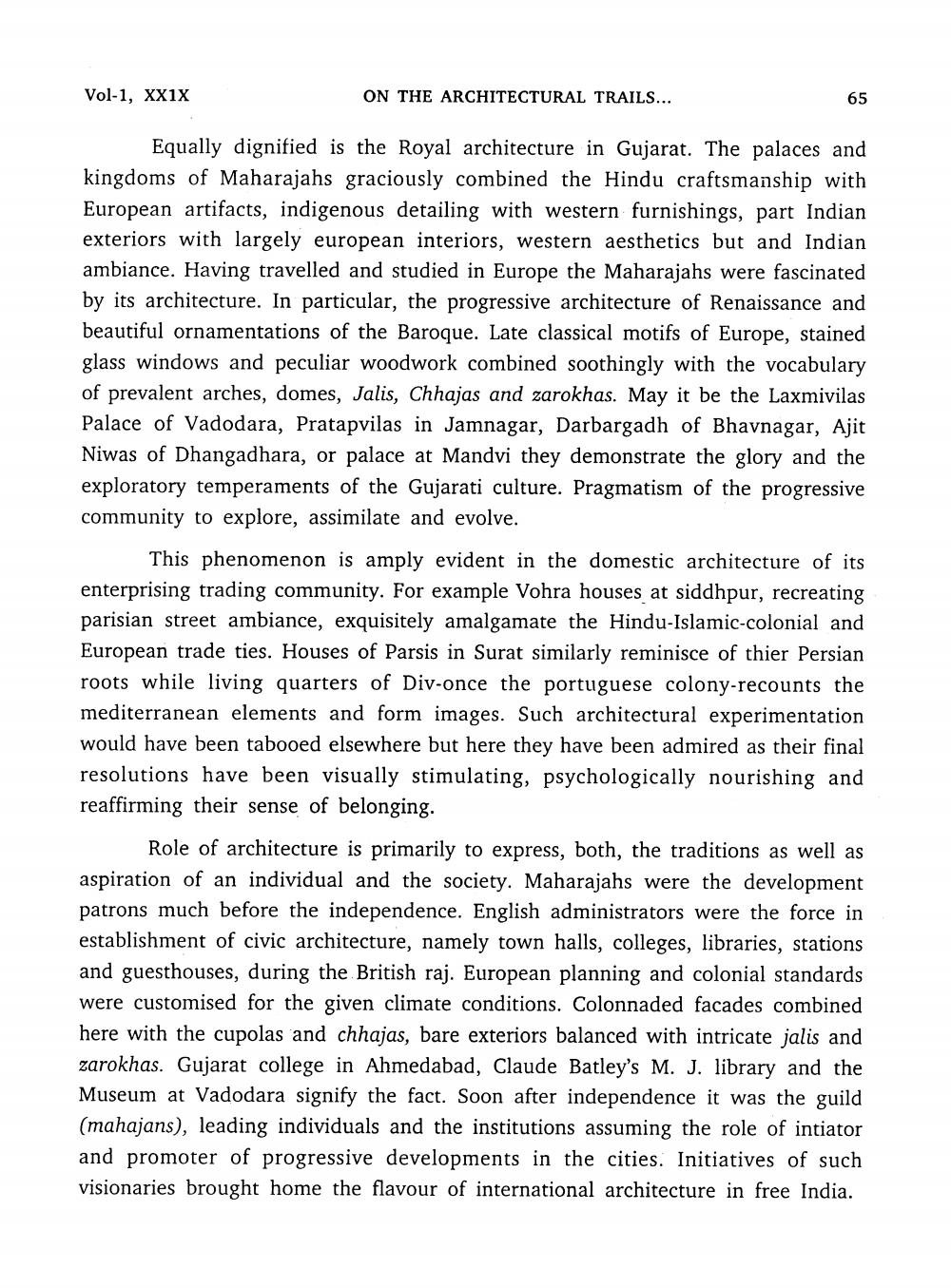________________
Vol-1, XX1X
ON THE ARCHITECTURAL TRAILS...
65
Equally dignified is the Royal architecture in Gujarat. The palaces and kingdoms of Maharajahs graciously combined the Hindu craftsmanship with European artifacts, indigenous detailing with western furnishings, part Indian exteriors with largely european interiors, western aesthetics but and Indian ambiance. Having travelled and studied in Europe the Maharajahs were fascinated by its architecture. In particular, the progressive architecture of Renaissance and beautiful ornamentations of the Baroque. Late classical motifs of Europe, stained glass windows and peculiar woodwork combined soothingly with the vocabulary of prevalent arches, domes, Jalis, Chhajas and zarokhas. May it be the Laxmivilas Palace of Vadodara, Pratapvilas in Jamnagar, Darbargadh of Bhavnagar, Ajit Niwas of Dhangadhara, or palace at Mandvi they demonstrate the glory and the exploratory temperaments of the Gujarati culture. Pragmatism of the progressive community to explore, assimilate and evolve.
This phenomenon is amply evident in the domestic architecture of its enterprising trading community. For example Vohra houses at siddhpur, recreating parisian street ambiance, exquisitely amalgamate the Hindu-Islamic-colonial and European trade ties. Houses of Parsis in Surat similarly reminisce of thier Persian roots while living quarters of Div-once the portuguese colony-recounts the mediterranean elements and form images. Such architectural experimentation would have been tabooed elsewhere but here they have been admired as their final resolutions have been visually stimulating, psychologically nourishing and reaffirming their sense of belonging.
Role of architecture is primarily to express, both, the traditions as well as aspiration of an individual and the society. Maharajahs were the development patrons much before the independence. English administrators were the force in establishment of civic architecture, namely town halls, colleges, libraries, stations and guesthouses, during the British raj. European planning and colonial standards were customised for the given climate conditions. Colonnaded facades combined here with the cupolas and chhajas, bare exteriors balanced with intricate jalis and zarokhas. Gujarat college in Ahmedabad, Claude Batley's M. J. library and the Museum at Vadodara signify the fact. Soon after independence it was the guild (mahajans), leading individuals and the institutions assuming the role of intiator and promoter of progressive developments in the cities. Initiatives of such visionaries brought home the flavour of international architecture in free India.




